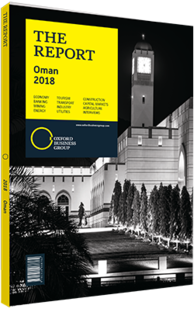Mining regulations support investment in copper extraction and processing in Oman
Following a period of mixed results for Oman’s mining and mineral processing sector, in which copper exports fell, the segment now appears set to rebound. According to the Central Bank of Oman, output of copper ore dropped to zero in 2016, after falling 42.9% in 2015 from 72,100 tonnes per annum to 41,200 per annum. Nevertheless, projects under way as of January 2018 appear likely to reverse this trend and contribute to a rise in Omani copper production.
HISTORY: Copper mining in the sultanate dates back thousands of years, but its modern history began in 1983 with the opening of an ultra-modern copper works at Lasail in northern Oman.
The Semail Ophiolite of the northern Hajar Mountains, where the Oman Mining Company (OMCO) was founded, is rich in high-grade copper deposits, with metallurgically simple ores that can be developed to produce high-quality copper concentrates for both local and overseas smelters. In the early 1980s OMCO constructed concentrator, smelting and refining facilities in the Sohar region capable of producing 20,000 tonnes of copper a year, with a purity of 99.9%.
The product was mostly used in the export of certain cathodes. As deposits became depleted, the plant shifted to an international role, as a toll smelting operation that imported copper concentrate and exported copper cathode. Until relatively recently there was little in the way of modern exploration for copper deposits in the sultanate. With the introduction of Versatile Time Domain Electromagnetic surveying (VTEM) in the past ten years, this has begun to change.
RECENT ACTIVITY: The latest technologies are being employed in the search for new copper deposits in northern Oman by Australia-based Savannah Resources, together with its Omani partners. Savannah Resources is among the largest players in the sultanate’s copper segment, holding a 65% stake in Al Fairuz Mining, which is the holder of the Block 5 licence comprising the high-grade Mahab 4 and Maqail South copper deposits. At the end of 2017 Savannah Resources was planning a series of copper mine developments in the country and had secured regulatory approvals, or “no objections”, from six of eight ministries by the fourth quarter. Remaining approvals and mining licences were expected to be received during the first quarter of 2018 and production scheduled to commence in the first half of the year.
NEW PLANTS: Another Australian company, Alara Resources, is developing what is set to be the sultanate’s single-largest copper resource at Washihi, 160 km south-east of Muscat. The company holds a 70% stake in Al Hadeetha Resources, a local Omani company that owns the mining licence for the area in which the Washihi deposits fall. The project is large enough to support the construction of a copper concentrator that will yield around 30,000 tonnes of copper concentrate per annum and around 300,000 tonnes in the first 10 years. Expected revenues over the first decade are projected by the company to reach $434m.
The plant is expected to commence operations in 2018, producing concentrate that will be shipped from Sohar Port. Underscoring the market opportunity in copper concentrate, Alara Resources is ultimately looking to localise the entire copper production process in Oman, including mining, concentrating and smelting. Copper is also attracting interest from outside the industry, with Oman Oil Company announcing in 2014 its first mining venture in collaboration with Oman Mining Company and Mawarid Mining, covering the exploration and development of five separate copper deposits at Yanqul in northern Oman.
The uptick in mining licence issuance comes against a backdrop of heightened investment in mineral exploration and processing activities. Aided by technologies including VTEM, and forthcoming regulatory changes including a new mining law and a comprehensive mining strategy, the sultanate is primed for a resurgence of investor interest in copper segment activities.
You have reached the limit of premium articles you can view for free.
Choose from the options below to purchase print or digital editions of our Reports. You can also purchase a website subscription giving you unlimited access to all of our Reports online for 12 months.
If you have already purchased this Report or have a website subscription, please login to continue.

